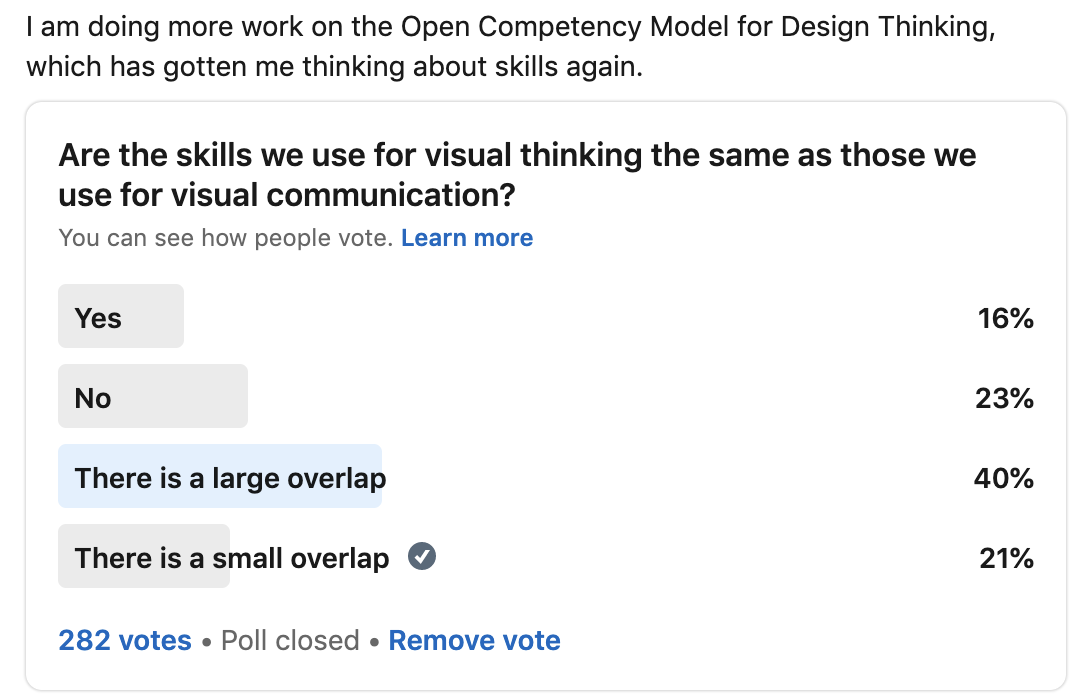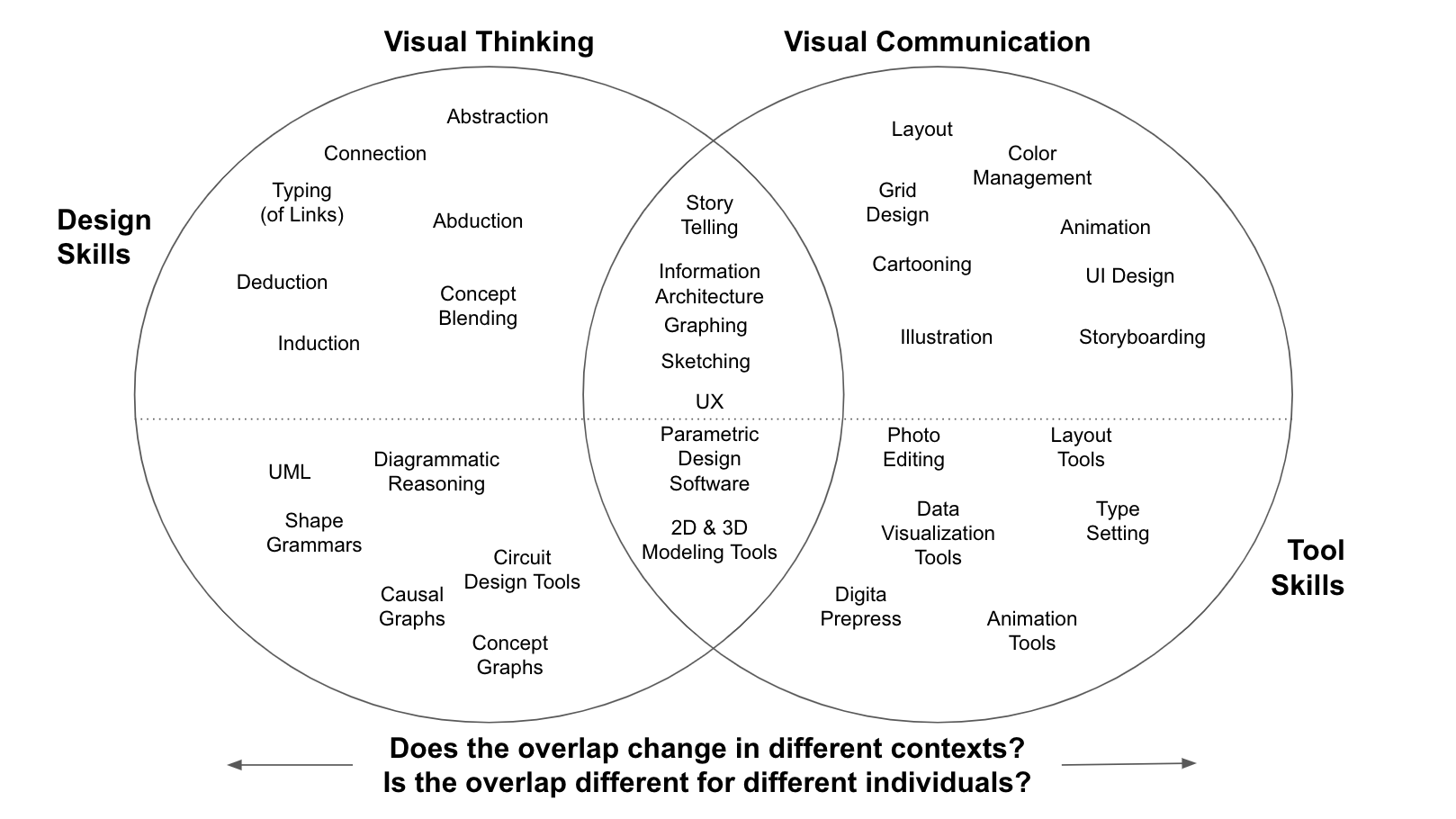Visual thinking and visual communication skills
Steven Forth is co-founder and managing partner at Ibbaka. See his skill profile here.
Verbal communication skills get a lot of attention these days. Being able to communicate ideas in writing and conversation is important in many situations. It is a big part of what it means to be human. But it is not the only part of how we communicate or how we think.
Please take this short survey on how talent management creates value
Visual communication skills are also critical. Data analytics did not enjoy wide adoption until it became connected with data visualization (see our posts on data literacy). The visuals in our presentations are often as important, and memorable, as what is said. For many people, visual cues are important to retention and recollection. For this large group learning does not take place without visual stimulation.
So we can agree that visual communication is a critical skill set. Is visual thinking is also important? I first became aware of visual thinking back in university when I read Rudolf Arnheim’s classic book on the topic. You can read an interesting review of this book by Sergei Mancha here. The table of contents is shown below.
I have been fascinated by visual thinking ever since, and it has become part of how I work.
On the other hand, my hands are clumsy, I have poor drawing skills and terrible lettering. My visual communication skills are limited (I am fortunate to work with a group of very skilled designers like N-Q Chang, Gregory Ronczewski and Anapaula Pollak). I do spend a lot of time visual thinking though, and there are many things that I can only understand if I can draw them. This got me thinking, what is the relationship between visual communication and visual thinking. I reached out to the design thinking community on LinkedIn to ask about this. You can see the poll and conversation here. The results of the poll are shown below.
There is a pretty even split here. 56% of people believe that visual communication and visual thinking skills are either the same or have a big overlap; 44% of people said no, the skills do not overlap or there is only a small overlap. As you can see, I fell into this later group.
This sent me back to the Ibbaka Talent skill graph to see what skills are associated with visual thinking, with visual communication and where there is an overlap. I cherry picked the most interesting ones to me and dropped them into a Venn diagram. I have labeled the top half of this diagram Design Skills but of course these are a mix of design and foundational skills. (Foundational skills are the skills used to build other skills.)
How visual thinking and visual communication skills overlap will differ quite a bit by both individual and context. For most of us, storytelling, a basic part of being human, will show up in both sets. My work skews to planning and strategy, but the projects I work on involve a lot of design and software engineering. That probably accounts for most of my answer (‘there is a small overlap’) and my choice of skills for the Venn diagram.
My thinking style is my own odd combination of sketching, abstraction, conversation, experimental and exploratory writing and then expository writing. I gravitate to the skills that support that style.
How does your personal style and the work you do shape how you answer the question “Are the skills we use for visual thinking the same as those we use for visual communication?”





